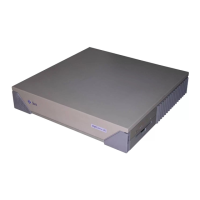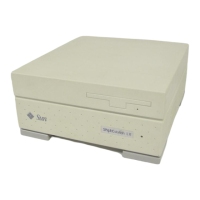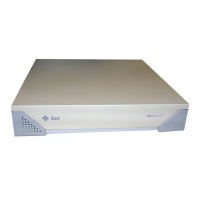Chapter 9 Solaris 10 Predictive Self-Healing and Solaris Diagnostics 9-13
The following example shows output for the ping -s command.
9.5.6 ps Command
The ps command lists the status of system processes. Using options and rearranging
the command output can assist in determining the Sun Ultra 45 or Ultra 25
workstation resource allocation.
-i interface Designates which interface to
send and receive the probe
packet through.
Enables a simple check of secondary network interfaces.
-n
Replaces host names with IP
addresses.
Used when an address is more beneficial than a host
name.
-s
Pings continuously in one-
second intervals. Ctrl-C
aborts. Upon abort, statistics
are displayed.
Helps identify intermittent or long-duration network
events. By piping
ping output to a file, activity
overnight can later be viewed at once.
-svR
Displays the route the probe
packet followed in one second
intervals.
Indicates probe packet route and number of hops.
Comparing multiple routes can identify bottlenecks.
# ping -s teddybear
PING teddybear: 56 data bytes
64 bytes from teddybear (192.146.77.140): icmp_seq=0. time=1.
ms
64 bytes from teddybear (192.146.77.140): icmp_seq=1. time=0.
ms
64 bytes from teddybear (192.146.77.140): icmp_seq=2. time=0.
ms
^C
----teddybear PING Statistics----
3 packets transmitted, 3 packets received, 0% packet loss
round-trip (ms) min/avg/max = 0/0/1
TABLE 9-6 Options for ping (Continued)
Option Description How It Can Help
